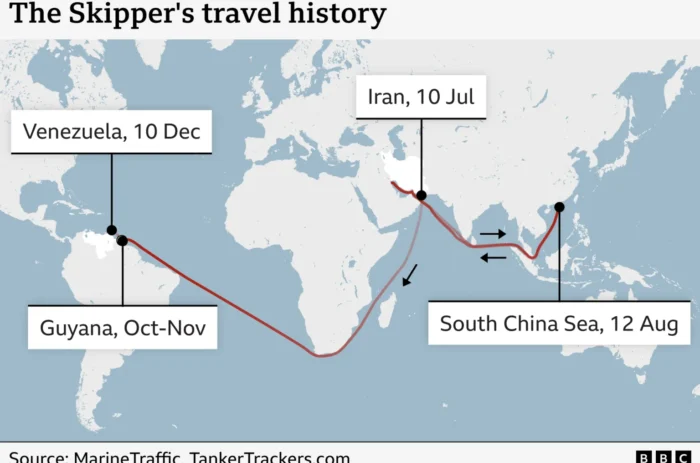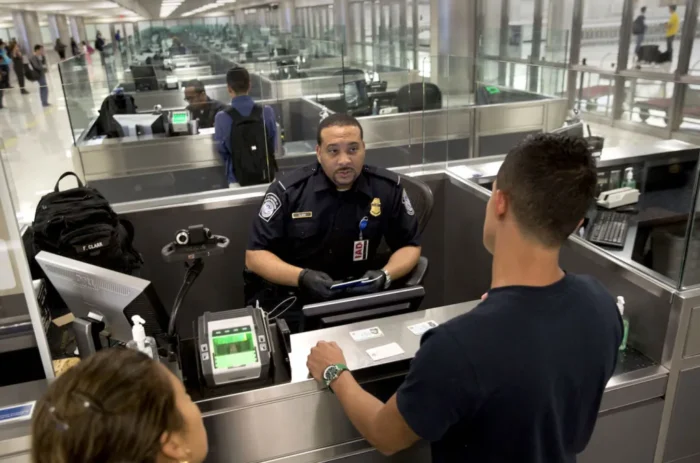
redo Jump to...
print Print...
(by Brian Flood, Fox News) – CNN is investigating the identity of a man who the network reported to be a Syrian prisoner freed from a secret jail as CNN cameras rolled after a local fact-checking group said he was actually a killer and torturer for Bashar al-Assad’s regime.
CNN’s Clarissa Ward went viral last week when she covered the alleged rescue of a “Syrian prisoner,” who she reported spent “three months in a windowless cell” in one of the Assad regime’s secret prisons. Ward called it “one of the most extraordinary moments I have witnessed.” But some observers were skeptical of the given narrative, since the man appeared to be decently groomed and in good condition for someone locked in a horrific prison and allegedly not given food or water in several days. [Despite the purported harsh treatment of detainees in secret prisons, Gharbal appeared clean, well-groomed, and physically healthy, with no visible injuries or signs of torture—an incongruous portrayal of someone allegedly held in solitary confinement in the dark for 90 days, Verify-Sy noted.]
Verify-SY, a Syrian journalism organization specializing in fact-checking and combating misinformation, on Sunday reported the prisoner was actually Salama Mohammad Salama, also known as Abu Hamza, who was a first lieutenant in Syrian Air Force Intelligence notorious for torturing young men.
In the segment, Ward said she was searching for traces of missing journalist Austin Tice when she found a man hiding under a blanket inside a locked cell at a prison building at the Syrian Air Force intelligence headquarters in Damascus. She said the guard, who was a rebel fighter, made the CNN crew turn off the cameras while he shot the lock off the cell door.
The man was under a blanket and initially didn’t move but eventually came to his feet, and Ward can be briefly seen in the segment breathing a sigh of relief.
The man appeared healthy, and Ward repeatedly told him he was “OK” as she offered him water while he clutched her arm. The rebel fighter told the man he was “free,” and the man said he hadn’t heard anything about his family for three months. Ward reported that his captors fled with the fall of Damascus, and he had been left without food or water for at least four days.
The man claimed to not know the notorious Assad was ousted by the militant group Hayat Tahrir al-Sham, which released people from prisons in Damascus where Assad held political opponents.
The man told CNN his name was Adel Ghurbal, and that he was a civilian who had been arrested three months ago and spent time in three different jails while being regularly interrogated. But Verify-Sy, which is affiliated with the Poynter Institute that also runs PolitiFact, reported the man was providing bogus information.
“The Verify-Sy team searched public records for the name ‘Adel Gharbal’ to verify the circumstances and duration of his detention but found no results. Gharbal, who claimed to hail from Homs and whose dialect supported this claim, prompted further inquiries in the city. The team discovered that his real name is ‘Salama Mohammad Salama,’ a revelation that brought shocking details to light. Salama, known as ‘Abu Hamza,’ is a first lieutenant in Syrian Air Force Intelligence, notorious for his activities in Homs. Residents of the Al-Bayyada neighborhood identified him as frequently stationed at a checkpoint in the area’s western entrance, infamous for its abuses,” Verify-SY reported.
“Abu Hamza reportedly managed several security checkpoints in Homs and was involved in theft, extortion, and coercing residents into becoming informants,” Verify-SY continued. “According to locals, his recent incarceration—lasting less than a month—was due to a dispute over profit-sharing from extorted funds with a higher-ranking officer. This led to his detention in one of Damascus’s cells, as per neighborhood sources.”
The report said Salama has a “grim history” and has “participated in military operations on several fronts in Homs in 2014, killed civilians,” adding that he was “responsible for detaining and torturing numerous young men in the city without cause or on fabricated charges.”
“Many were targeted simply for refusing to pay bribes, rejecting cooperation, or even for arbitrary reasons like their appearance. These details were corroborated by families of victims and former detainees who spoke with Verify-Sy,” the report said.
“As Syrians first and journalists second, we must ask,” Verify-SY continued. “Did CNN deliberately mislead its audience to rehabilitate Abu Hamza’s image, or did it fall victim to misinformation? And if the latter, what led the network to this mistake, especially when Syrians have succeeded in exposing crimes and violations that the world at large has failed to document over decades?”
CNN has defended Ward’s reporting but admits the man may have given a false identity.
“No one other than the CNN team was aware of our plans to visit the prison building featured in our report that day,” a spokesperson told Fox News Digital. “The events transpired as they appear in our film. The decision to release the prisoner featured in our report was taken by the guard – a Syrian rebel. We reported the scene as it unfolded, including what the prisoner told us, with clear attribution.”
“We have subsequently been investigating his background and are aware that he may have given a false identity,” the CNN spokesperson continued. “We are continuing our reporting into this and the wider story.”
Videos of the segment posted on X have been hit with community notes.
CNN has also added a pinned comment to its YouTube video of the segment, which has 1.3 million views as of Monday morning.
“Since this report was published, CNN has continued to look into the background of the prisoner featured in it. CNN is now aware that he may have given a false identity. We are continuing our reporting into this and the wider story,” it reads.
By Brian Flood, Digital reporter/editor for Fox News, published at Fox on Dec. 13, 2024. Reprinted here for educational purposes only. May not be reproduced on other websites without permission.
Questions
NOTE: Syrian president/autocrat/dictator Bashar Assad fled the country on December 8. Following this, rebels (former/current terrorists, free Syrians and Kurds) opened the political prisons and freed the prisoners.
1. What was a CNN reporter doing in an empty Syrian prison last week?
2. What facts did CNN’s Clarissa Ward report about the man they found in one of the cells? – What did the man in the prison tell the rebel fighter and Ward when they freed him?
3. a) Who is the group Verify-Sy?
b) For what reasons was Verify-Sy skeptical about the freed prisoner’s story?
4. a) How did Verify-Sy attempt to verify or disprove Adel Ghurbal’s story? What did they do? Why did they go to the city of Homs, which is 100 miles from Damascus?
b) What information did they uncover about the man who was freed from prison?
5. What questions do the Syrian journalists from Verify-Sy ask following their discovery?
6. How has CNN responded to questions about Verify-Sy’s report?
7. What is your reaction to this news story? Explain your answer.
Background
From Verify-sy published Dec. 15:
On December 12, CNN published a video report on its website, YouTube, and X (formerly Twitter) titled, “CNN Reporter Documents a Shocking Moment of Finding a Prisoner Held in a Secret Syrian Jail, Unaware of Assad’s Overthrow.”
In the footage, CNN’s correspondent Clarissa Ward is seen accompanied by an armed individual as they open a cell in a Damascus prison. The report features a man named “Adel Gharbal” from Homs, who claims he was arrested three months earlier for having his phone searched and was taken to Damascus, initially held in an unnamed prison before being transferred to the location shown in the video. According to the report, this transfer occurred three days after the fall of Assad’s regime. …
Clarissa Ward, whose presence in Damascus was reportedly tied to her search for any trace of missing American journalist Austin Tice, did not convincingly address why the prison was empty of other detainees, leaving “Adel Gharbal” [who is really Salameh Mohammad Salameh, aka Abu Hamza] as the sole prisoner. Gharbal alternated between trembling in fear and behaving calmly, raising further questions about the report’s authenticity. …
In addition to his violent past, residents testified that Abu Hamza [Salameh Mohammad Salameh,] has been attempting to garner sympathy since the fall of the regime, claiming he was “forced” into committing his crimes. The Verify-Sy team also learned that he deactivated his social media accounts and changed his phone number, presumably to erase evidence of his involvement in armed activities and war crimes. …
Updated Dec. 16: As a continuation of the investigation previously published by the “Verify-sy” regarding “Salameh Mohammad Salameh,” [Abu Hamza] the first assistant in [ousted autocratic President Bashar al-Assad’s] Air Force Intelligence branch who appeared in a CNN report, the team expanded the scope of the investigation. The team uncovered new evidence, obtaining a photo/graph showing Salameh in his office, dressed in full military uniform. This discovery adds further confirmation of his past activities.
 “Verify-sy” team confirms that the features in the attached photo match Salameh’s appearance in the CNN report. investigation has verified the authenticity of the image, ruling out any possibility of it being manipulated using artificial intelligence.
“Verify-sy” team confirms that the features in the attached photo match Salameh’s appearance in the CNN report. investigation has verified the authenticity of the image, ruling out any possibility of it being manipulated using artificial intelligence.
Daily “Answers” emails are provided for Daily News Articles, Tuesday’s World Events and Friday’s News Quiz.



